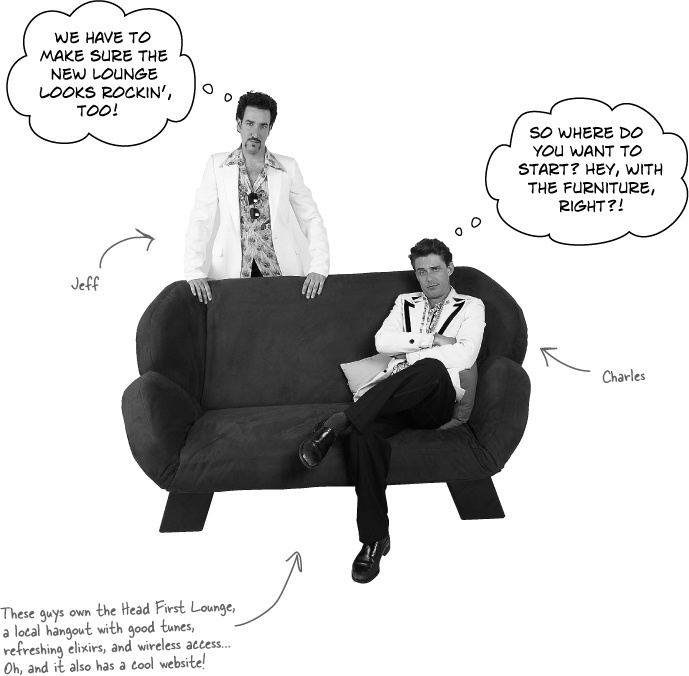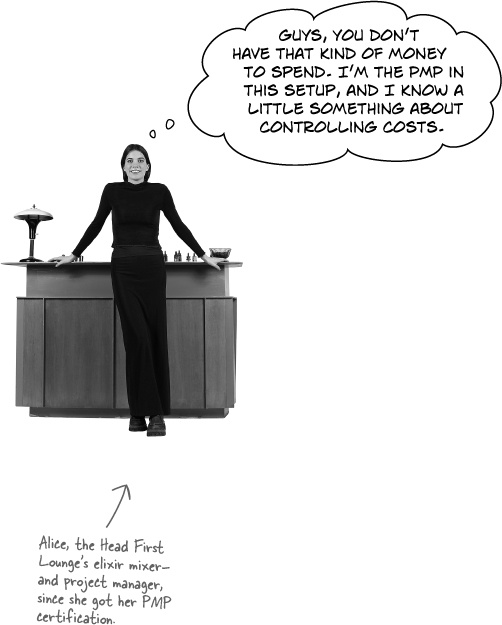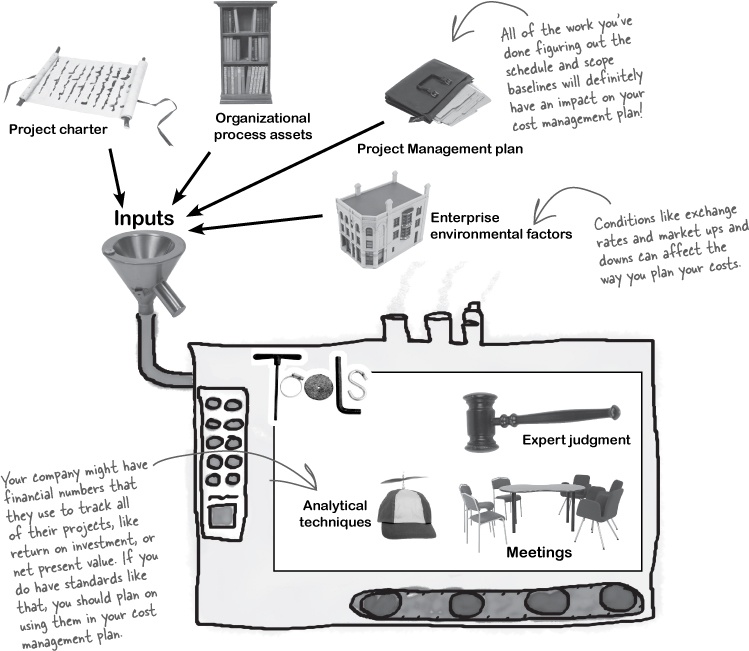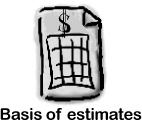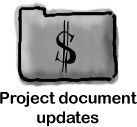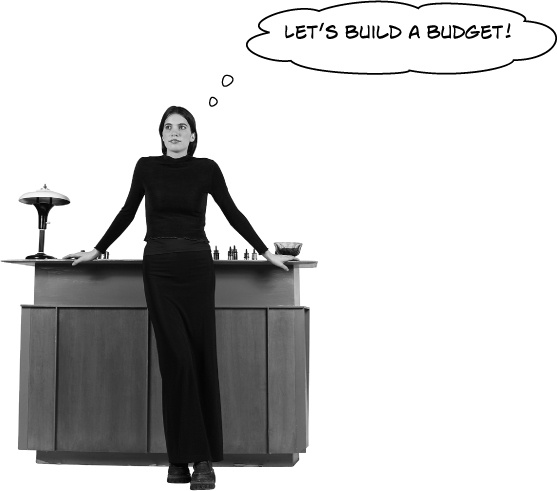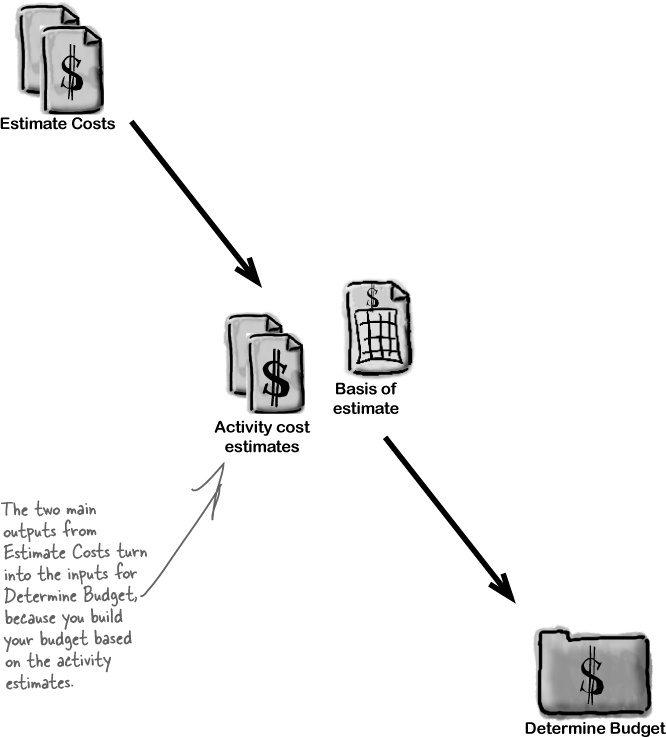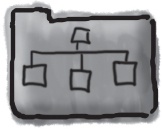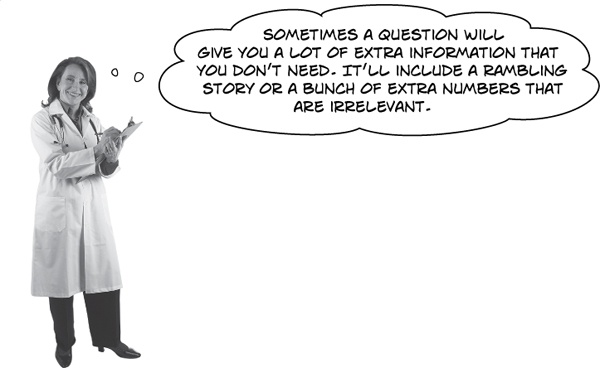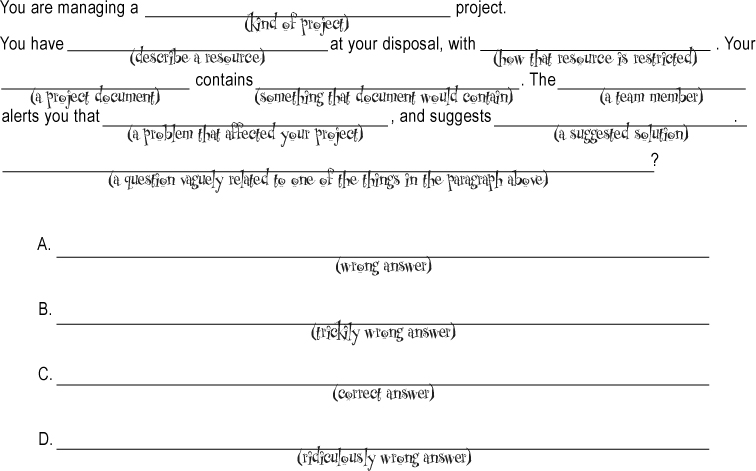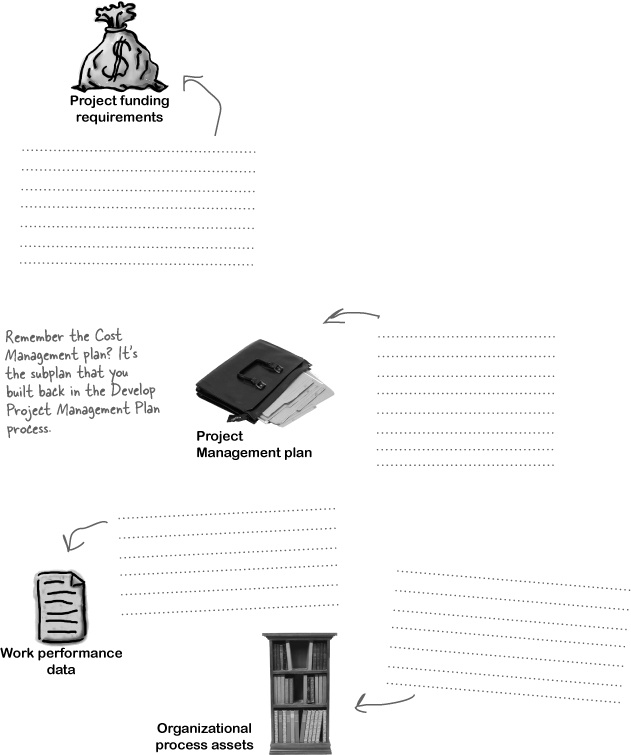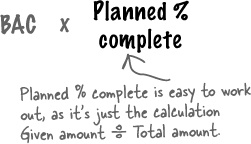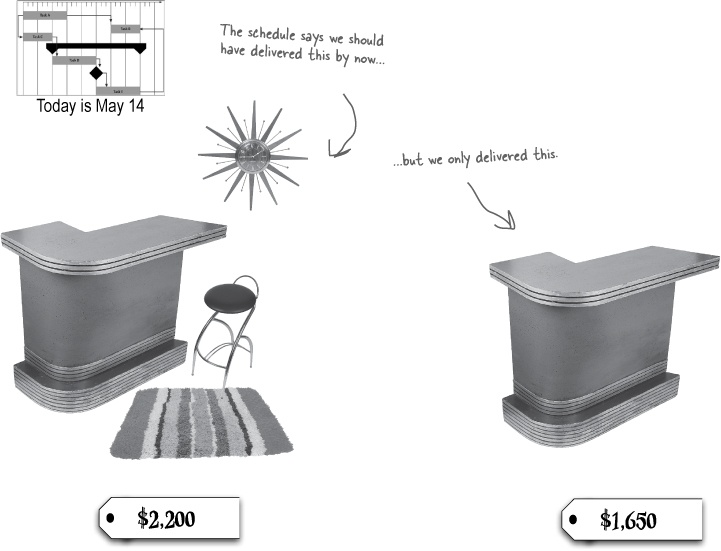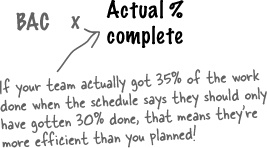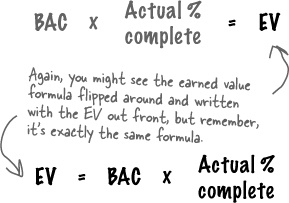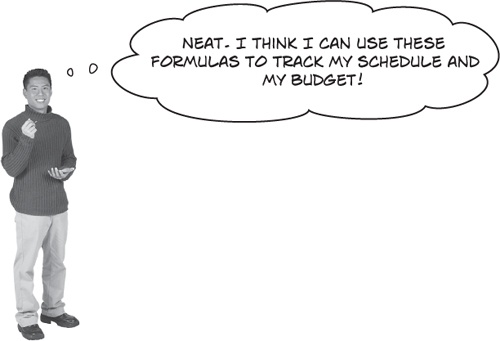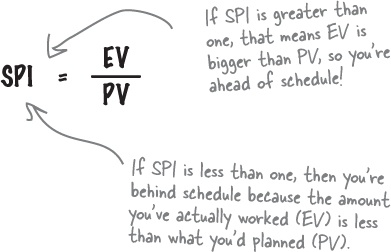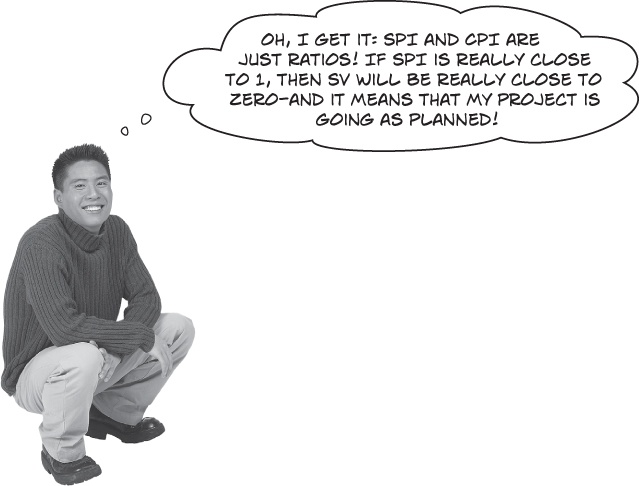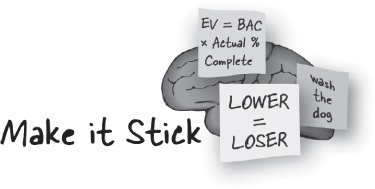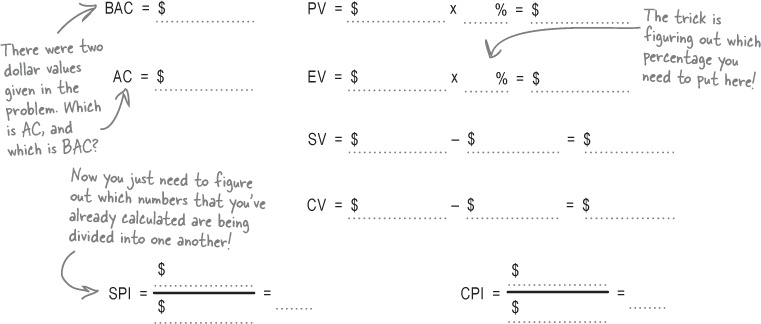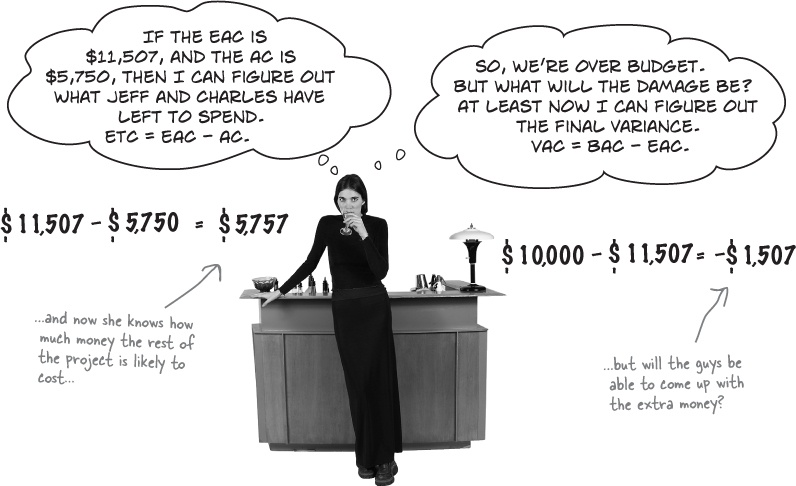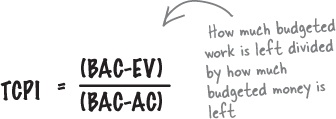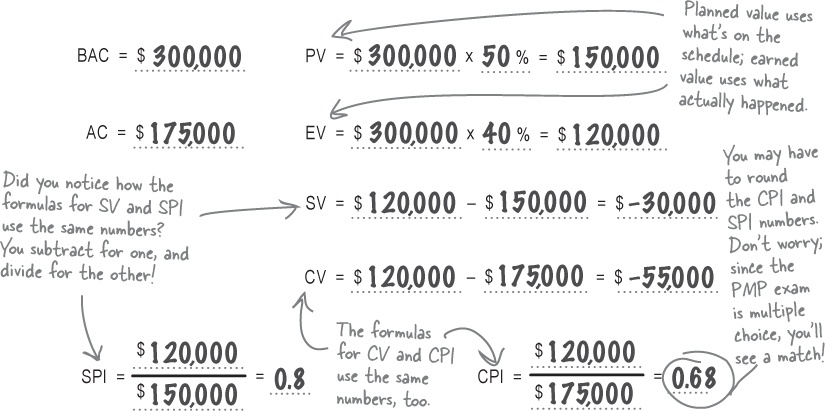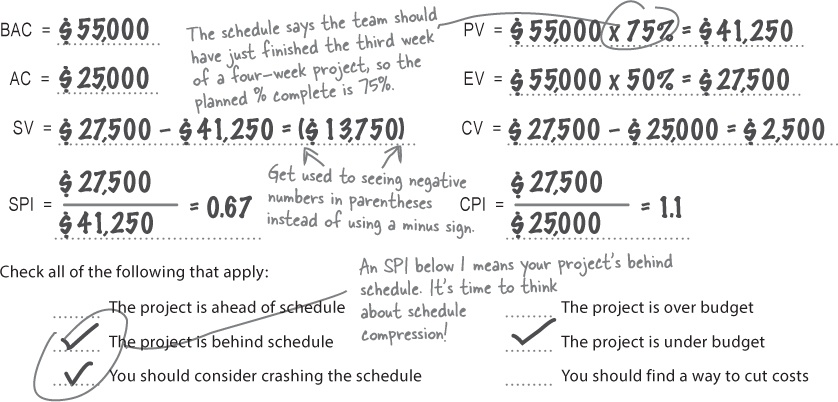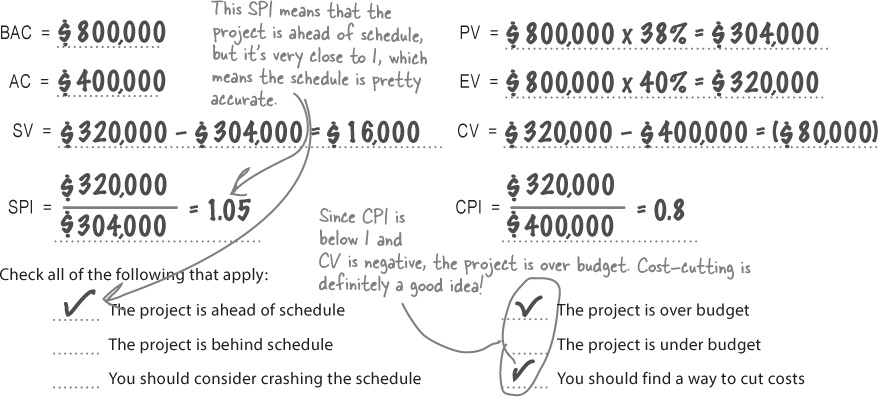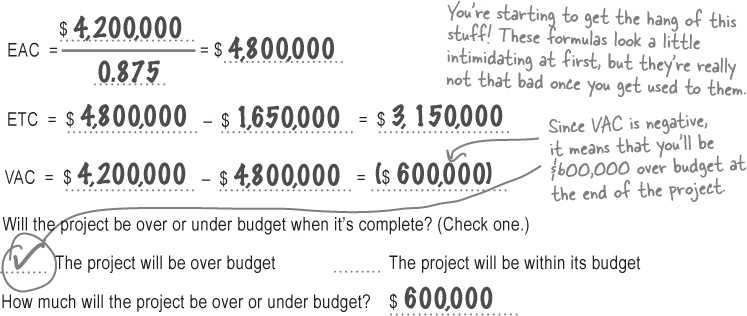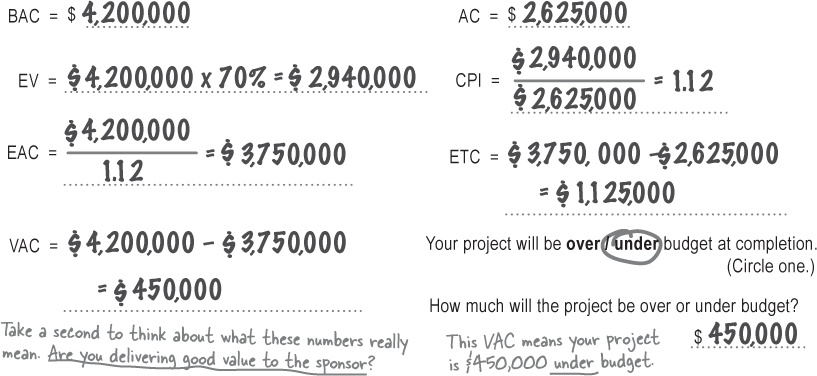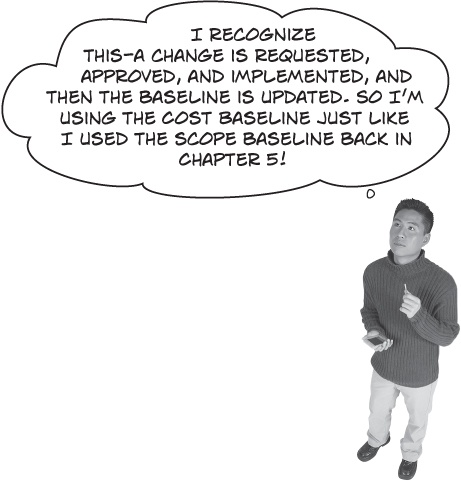Chapter 7. Cost Management: Watching the bottom line
Every project boils down to money. If you had a bigger budget, you could probably get more people to do your project more quickly and deliver more. That’s why no project plan is complete until you come up with a budget. But no matter whether your project is big or small, and no matter how many resources and activities are in it, the process for figuring out the bottom line is always the same!
Time to expand the Head First Lounge
The Head First Lounge is doing so well that the guys are going to go ahead and open another Lounge near you! They’re renting a basement bar, and now all they need to do is renovate it.
The guys go overboard
When they start planning out what to buy, they want really expensive original retro stuff—the biggest bar they can find, and seventies textiles for the walls, floor, and upholstery, plus accessories—this is going to cost a lot of money...
Lounge conversation
Jeff: That bar is soooo cool! I can just imagine mixing up some crazy elixirs at parties!
Alice: Look, I know you want the new Lounge to look as good as the original, but you only have a little spare cash to spend on this. That means you have a limit of $10,000.
Charles: We should be able to get the new place looking so sweet with that!
Alice: Costs can creep up on you if you don’t watch what you’re doing. The best way to handle this is to create a budget and check your progress against it as you go.
Jeff: You always turn everything into a project, even mixing elixirs! Can’t we just have fun with this?
Alice: Not if you don’t want to go into debt.
Introducing the Cost Management processes
To make sure that they don’t go over budget, Jeff, Charles, and Alice sit down and come up with detailed estimates of their costs. Once they have that, they add up the cost estimates into a budget, and then they track the project according to that budget while the work is happening.
Plan Cost Management
Just like all of the other knowledge areas, you need to plan out all of the processes and methodologies you’ll use for Cost Management up front.
Estimate Costs process
This means figuring out exactly how much you expect each work activity you are doing to cost. So each activity is estimated for its time and materials cost, and any other known factors that can be figured in.
Determine Budget process
Here’s where all of the estimates are added up and baselined. Once you have figured out the baseline, that’s what all future expenditures are compared to.
Plan how you’ll estimate, track, and control your costs
When you’ve got your project charter written and you’re starting to put together your Project Management plan, you need to think about all of the processes and standards you’ll follow when you estimate your budget and track to that estimate. By now, you’re pretty familiar with the inputs, outputs, tools, and techniques you’ll use in the Plan Cost Management process.
Now you’ve got a consistent way to manage costs
There’s only one output of the Plan Cost Management process, and that’s the Cost Management plan. You’ll use this document to specify the accuracy of your cost estimates, the rules you’ll use to determine whether or not your cost processes are working, and the way you’ll track your budget as the project progresses. When you’ve planned out your Cost Management processes, you should be able to estimate how much your project will cost using a format consistent with all the rest of your company’s projects. You should also be able to tell your management how you’ll know if your project starts costing more than you estimated.
Cost Management plan
Here’s where you write down the subsidiary plan inside the Project Management plan that deals with costs. You plan out all of the work you’ll do to figure out your budget and make sure your project stays within it.
Note
You’ll want to define the units you’ll use to manage your budget. For some projects, that’s total person-hours; for others, it’s an actual value in money. However you plan to track your costs, you need to let everybody on the project know up front.
The Plan Cost Management process is where you plan out all the work you’ll do to make sure your project doesn’t cost more than you’ve budgeted.
What Alice needs before she can estimate costs
Alice wants to keep the Lounge project’s costs under control, and that starts with the Estimate Costs process. Before Alice can estimate costs, she needs the scope baseline. Once she knows who’s doing what work, and how long it’ll take, she can figure out how much it will cost.
Watch it!
Analogous estimating is sometimes called “top-down estimating”
Take a minute and think about why it would be called “top-down.” When you’re doing bottom-up estimating, first you break it down into pieces, estimate each piece, and add them up. Analogous estimation is the opposite: you start with the whole project (without breaking it up at all), find other projects that were like it, and use those projects to come up with a new estimate.
Good question.
Not all of the estimation techniques for cost are the same as the ones we used for time. Often, people only have a certain amount of time to devote to a project, and a fixed amount of money too. So, it makes sense that some of the tools for estimating both would overlap. We’ll learn a few new ones next.
Other tools and techniques used in Estimate Costs
A lot of times you come into a project and there is already an expectation of how much it will cost or how much time it will take. When you make an estimate really early in the project and you don’t know much about it, that estimate is called a rough order of magnitude estimate. (You’ll also see it called a ROM or a ballpark estimate.) It’s expected that it will get more refined as time goes on and you learn more about the project. Here are some more tools and techniques used to estimate cost:
Note
This estimate is REALLY rough! It’s got a range of -25% to +75%, which means it can be anywhere from half to one and a half times the actual cost! So you only use it at the very beginning of the project.
Project management estimating software
Project managers will often use specialized estimating software to help come up with cost estimates (like a spreadsheet that takes resource estimates, labor costs, and materials costs and performs calculations).
Vendor bid analysis
Sometimes you will need to work with an external contractor to get your project done. You might even have more than one contractor bid on the job. This tool is all about evaluating those bids and choosing the one you will go with.
Reserve analysis
You need to set aside some money for cost overruns. If you know that your project has a risk of something expensive happening, better to have some cash laying around to deal with it. Reserve analysis means putting some cash away just in case.
Note
You’ll see this in action when we look at Risk Management in Chapter 11.
Cost of quality
You will need to figure the cost of all of your quality-related activities into the overall budget, too. Since it’s cheaper to find bugs earlier in the project than later, there are always quality costs associated with everything your project produces. Cost of quality is just a way of tracking the cost of those activities.
Note
Since the next chapter is all about quality, you’ll be learning a lot about this in Chapter 8.
Cost of quality is how much money it takes to do the project right.
Group decision-making techniques
You’ll need to work with groups of people to figure out your costs. It’s important that your team feels like they can commit to the overall budget and schedule.
Let’s talk numbers
There are a few numbers that can appear on the test as definitions. You won’t need to calculate these, but you should know what each term means.
Benefit cost ratio (BCR)
This is the amount of money a project is going to make versus how much it will cost to build it. Generally, if the benefit is higher than the cost, the project is a good investment.
Note
You’ll get exam questions asking you to use BCR or NPV to compare two projects. The higher these numbers are, the better!
Net present value (NPV)
Note
Money you’ll get in three years isn’t worth as much to you as money you’re getting today. NPV takes the “time value” of money into consideration, so you can pick the project with the best value in today’s dollars.
This is the actual value at a given time of the project minus all of the costs associated with it. This includes the time it takes to build it and labor as well as materials. People calculate this number to see if it’s worth doing a project.
Opportunity cost
When an organization has to choose between two projects, it’s always giving up the money it would have made on the one it doesn’t do. That’s called opportunity cost. It’s the money you don’t get because you chose not to do a project.
Note
If a project will make your company $150,000, then the opportunity cost of selecting another project instead is $150,000 because that’s how much your company’s missing out on by not doing the project.
Internal rate of return
This is the amount of money the project will return to the company that is funding it. It’s how much money a project is making the company. It’s usually expressed as a percentage of the funding that has been allocated to it.
Depreciation
This is the rate at which your project loses value over time. So, if you are building a project that will only be marketable at a high price for a short period of time, the product loses value as time goes on.
Lifecycle costing
Before you get started on a project, it’s really useful to figure out how much you expect it to cost—not just to develop, but to support the product once it’s in place and being used by the customer.
Now Alice knows how much the Lounge will cost
Once you’ve applied all of the tools in the Estimate Costs process, you’ll get an estimate for how much your project will cost. It’s always important to keep all of your supporting estimate information, too. That way, you know the assumptions you made when you were coming up with your numbers.
Activity cost estimates
This is the cost estimate for all of the activities in your activity list. It takes into account resource rates and estimated duration of the activities.
Basis of estimates
Just like the WBS has a WBS dictionary, and the activity list has activity attributes, the cost estimate has a supporting detail called the basis of estimates. Here is where you list out all of the rates and reasoning you have used to come to the numbers you are presenting in your estimates.
Updates to project documents
Along the way, you might find that you need to change the way you measure and manage cost. These updates allow you to make changes to the Project Management plan to deal with those improvements.
Lounge conversation
Jeff: OK, how do we start? There are a lot of things to buy here.
Alice: We already have your savings, and the rest will come in July at the end of the quarter. The Lounge is having another great year, so the profits are pretty good. Your savings are around $4,000 and the profits will probably be closer to $6,000. That’s definitely enough money to work with.
Charles: Well, the furniture I want isn’t back in stock until June.
Alice: OK, so we have to time our costs so that they’re in line with our cash flow.
Jeff: Oh! I see. So we can start building now, but we’ll still have money in June and July when the furniture comes in. Perfect.
The Determine Budget process
Once Alice has cost estimates for each activity, she’s ready to put a budget together. She does that using the Determine Budget process. Here’s where you take the estimates that you came up with and build a budget out of them. You’ll build on the activity cost estimates and basis of cost estimate that you came up with in Estimate Costs.
You use the outputs from the last process where you created estimates as inputs to this one. Now you can build your budget.
What you need to build your budget
The inputs to Determine Budget are largely the same ones that you saw in Estimate Costs, with the notable additions of activity cost estimates and basis of cost estimate.
Determine budget: how to build a budget
Roll up your estimates into control accounts.
This tool is called cost aggregation. You take your activity estimates and roll them up into control accounts on your work breakdown structure. That makes it easy for you to know what each work package in your project is going to cost.
Come up with your reserves.
When you evaluate the risks to your project, you will set aside some cash reserves to deal with any issues that might come your way. This tool is called reserve analysis.
Use your expert judgment.
Here’s where you compare your project to historical data that has been collected on other projects to give your budget some grounding in real-world historical relationships, and you use your own expertise and the expertise of others to come up with a realistic budget to cover your project’s costs.
Make sure you haven’t blown your limits.
This tool is funding limit reconciliation. Since most people work in companies that aren’t willing to throw unlimited money at a project, you need to be sure that you can do the project within the amount that your company is willing to spend.
Build a baseline.
Just like your scope and schedule baselines, a cost baseline is a snapshot of the planned budget. You compare your actual performance against the baseline so you always know how you are doing versus what you planned.
Figure out funding requirements.
It’s not enough to have an overall number that everyone can agree to. You need to plan out how and when you will spend it, and document those plans in the project funding requirements. This output is about figuring out how you will make sure your project has money when it’s needed, and that you have enough to cover unexpected risks as well as known cost increases that change with time.
Update your project documents.
Once you have estimated and produced your baseline and funding requirements, you need to update your Cost Management plan with anything you learned along the way.
Estimate Costs is just like Estimate Activity Durations. You get the cost estimate and the basis of the cost estimate, updates to the plan, and requested changes when you are done.
Question Clinic: The red herring
Note
104. You are managing a highway construction project. You have to build a three-mile interchange at a cost of $75,000 per quarter-mile. Your project team consists of a road planner, an architect, an engineer, a foreman, and 16 highway workers. The workers will not be available until week 10 of the project. Your business case document is complete, and you have met with your stakeholders and sponsor. Your senior managers are now asking you to come up with an estimate. Your company has done four other highway projects very similar to this one, and you have decided to make your estimate by looking at the costs of those previous projects.
Did you read that whole paragraph, only to find out the question had nothing to do with it?
What kind of estimate involves comparing your project to a previous one?
Parametric
Analogous
Bottom-up
Rough order of magnitude
The Control Costs process is a lot like schedule control
When something unexpected comes up, you need to understand its impact on your budget and make sure that you react in the best way for your project. Just like changes can cause delays in the schedule, they can also cause cost overruns. The Control Costs process is all about knowing how you are doing compared to your plan and making adjustments when necessary.
Monitoring & Controlling process group
A few new tools and techniques
The tools in Control Costs are all about helping you figure out where to make changes so you don’t overrun your budget.
Earned value management
Here’s where you measure how your project is doing compared to the plan. This involves using the earned value formulas to assess your project.
To-complete performance index
The to-complete performance index (TCPI) is a calculation that you can use to help you figure out how well your project needs to perform in the future in order to stay on budget.
Performance reviews
Reviews are meetings where the project team reviews performance data to examine the variance between actual performance and the baseline. Earned value management is used to calculate and track the variance. Over time, these meetings are a good place to look into trends in the data.
Forecasting
Use the information you have about the project right now to predict how close it will come to its goals if it keeps going the way it has been. Forecasting uses some earned value numbers to help you come up with preventive and corrective actions that can keep your project on the right track.
Project management software
You can use software packages to track your budget and make it easier to know where you might run into trouble.
Reserve analysis
Throughout your project, you are looking at how you are spending versus the amount of reserve you’ve budgeted. You might find that you are using reserved money at a faster rate than you expected or that you need to reserve more as new risks are uncovered.
Forecasting and performance measurement are very important! You use them to find the changes you need to make in your project.
Look at the schedule to figure out your budget
The tools in Control Costs are all about helping you figure out where to make changes so you don’t overrun your budget.
Budget at completion (BAC)
How much money are you planning on spending on your project? Once you add up all of the costs for every activity and resource, you’ll get a final number...and that’s the total project budget. If you only have a certain amount of money to spend, you’d better make sure that you haven’t gone over!
How to calculate planned value
If you look at your schedule and see that you’re supposed to have done a certain percentage of the work, then that’s the percent of the total budget that you’ve “earned” so far. This value is known as planned value. Here’s how you calculate it.
First, write down your
BAC—Budget at completion
This is the first number you think of when you work on your project costs. It’s the total budget that you have for your project—how much you plan to spend on your project.
Then multiply that by your
Planned % complete
If the schedule says that your team should have done 300 hours of work so far, and they will work a total of 1,000 hours on the project, then your planned % complete is 30%.
The resulting number is your
PV—Planned value
This is how much of your budget you planned on using so far. If the BAC is $200,000, and the schedule says your planned % complete is 30%, then the planned value is $200,000 × 30% = $60,000.
Not yet, it doesn’t.
But wouldn’t be nice if, when your schedule said you were supposed to be 37.5% complete with the work, then you knew that you’d actually spent 37.5% of your budget?
Well, in the real world things don’t always work like that, but there are ways to work out—approximately—how far on (or off) track your budget actually is.
Earned value tells you how you’re doing
When Alice wants to track how her project is doing versus the budget, she uses earned value. This is a technique where you figure out how much of your project’s value has been delivered to the customer so far. You can do this by comparing the value of what your schedule says you should have delivered against the value of what you actually delivered.
Your schedule tells you a lot about where you are supposed to be right now.
The actual cost of this project on May 14th is $1,650. The planned value was $2,200.
How to calculate earned value
If you could estimate each activity exactly, every single time, you wouldn’t need earned value. Your schedule would always be perfectly accurate, and you would always be exactly on budget.
But you know that real projects don’t really work that way! That’s why earned value is so useful—it helps you put a number on how far off track your project actually is. And that can be a really powerful tool for evaluating your progress and reporting your results. Here’s how you calculate it.
Note
When you do work, you convert the money your sponsor invests in your project into value. So, earned value is about how much work you have been able to accomplish with the money you’ve been given. When you calculate earned value, you’re showing your sponsor how much value that investment has earned.
First, write down your
BAC—Budget at completion
Remember, this is the total budget that you have for your project.
BAC x
Then multiply that by your
Actual % complete
Say the schedule says that your team should have done 300 hours of work so far, out of a total of 1,000. But you talk to your team and find out they actually completed 35% of the work. That means the actual % complete is 35%.
The resulting number is your
EV—Earned value
This figure tells you how much your project actually earned. Every hour that each team member works adds value to the project. You can figure it out by taking the percentage of the hours that the team has actually worked and multiplying it by the BAC. If the total cost of the project is $200,000, then the earned value is $200,000 × 35% = $70,000.
Brain Power
What’s the difference between actual cost and planned value? What does it mean if your AC is bigger than your PV? What if it’s smaller?
This is a harder problem to solve than it seems! Take a minute and really think about it before you turn the page.
You’ll be doing a lot of calculations in a minute. The best way to approach any calculation is to understand what it’s for and why you use it. So before you go on, grab a cup of coffee and think for a few minutes about the difference between BAC and PV. Also, how do you compute actual % complete on a real project? Doing that will really help you get these ideas firmly embedded into your brain!
Put yourself in someone else’s shoes
Earned value is one of the most difficult concepts that you need to understand for the PMP exam. The reason it’s so confusing for so many people is that these calculations seem a little weird and arbitrary to a lot of project managers.
But they make a lot more sense if you think about your project the way your sponsor thinks about it. If you put yourself into the sponsor’s shoes, you’ll see that this stuff actually makes sense!
Think about earned value from the sponsor’s perspective. It all makes a lot more sense then.
Let’s say you’re an executive:
You’re making a decision to spend $300,000 of your company’s money on a project. To a project manager, that’s a project’s budget. But to you, the sponsor, that’s $300,000 of value you expect to get!
So how much value is the project delivering?
If you’re the sponsor, you’re thinking about the bottom line. And that bottom line is whether or not you’re getting your money’s worth from the project. If the team’s done 50% of the work, then you’ve gotten $150,000 of value so far.
Note
If you put the value in dollar terms, your sponsor knows what return he’s getting for his investment.
But if the schedule says that they should have done 60% of the work by now, then you’re getting less value than you were promised!
Note
The sponsor doesn’t care as much about how you spend the budget. He just wants to get the most value for his money!
You can definitely use them to track the schedule and budget on smaller projects.
But once your projects start getting more complex, your formulas are going to need to take into account that you’ve got several people all doing different activities, and that could make it harder to track whether you’re ahead of schedule or over budget.
So now that you know how to calculate PV and EV, they’re all you need to stay on top of everything. What are you waiting for? Flip the page to find out how!
Is your project behind or ahead of schedule?
Figuring out if you’re on track in a small project with just a few people is easy. But what if you have dozens or hundreds of people doing lots of different activities? And what if some of them are on track, some are ahead of schedule, and some of them are behind? It starts to get hard to even figure out whether you’re meeting your goals.
Wouldn’t it be great if there were an easy way to figure out if you’re ahead or behind schedule? Well, good news: that’s exactly what earned value is used for!
Schedule performance index (SPI)
If you want to know whether you’re ahead of or behind schedule, use SPIs. The key to using this is that when you’re ahead of schedule, you’ve earned more value than planned! So EV will be bigger than PV.
To work out your SPI, you just divide your EV by your PV.
Schedule variance (SV)
It’s easy to see how variance works. The bigger the difference between what you planned and what you actually earned, the bigger the variance.
So, if you want to know how much ahead or behind schedule you are, just subtract PV from EV.
Are you over budget?
You can do the same thing for your budget that you can do for your schedule. The calculations are almost exactly the same, except instead of using planned value—which tells you how much work the schedule says you should have done so far—you use actual cost (AC). That’s the amount of money that you’ve spent so far on the project.
Note
Remember, EV measures the work that’s been done, while AC tells you how much you’ve spent so far.
Relax
Measuring your cost difference in dollars is easy, but what if your schedule variance is negative?
A lot of people worry about that, but it’s actually not bad. Planned value just means that you planned on delivering a certain amount of value to your sponsor at a certain time. An SV of, say, –$5,000 tells you that you haven’t delivered all the value you promised.
Cost variance (CV)
This tells you the difference between what you planned on spending and what you actually spent.
So, if you want to know how much under or over budget you are, just take AC away from EV.
To-complete performance index (TCPI)
This tells you how well your project will need to perform to stay on budget.
You’re within your budget if...
CPI is greater than or equal to 1 and CV is positive. When this happens, your actual costs are less than earned value, which means the project is delivering more value than it costs.
You’ve blown your budget if...
CPI is less than 1 and CV is negative. When your actual costs are more than earned value, that means that your sponsor is not getting his money’s worth of value from the project.
Note
Now Alice can take a look at the Lounge’s checkbook. She figures out that she spent $5,750 on the project so far.
CPI = $4,000 ÷ $5,750 = 0.696 Since CPI is less than 1, it means that Jeff and Charles have blown their budget.
CV = $4,000 - $5,750 = -$1,750 And that’s how much they’ve gone over! Jeff, Charles, and Alice had better figure out how to contain those runaway costs, or they’ll have a nasty surprise later.
The earned value management formulas
Earned value management (EVM) is just one of the tools and techniques in the Control Costs process, but it’s a big part of PMP exam preparation. When you use these formulas, you’re measuring and analyzing how far off your project is from your plan. Remember, think of everything in terms of how much value you’re delivering to your sponsor! Take a look at the formulas one more time:
Interpret CPI and SPI numbers to gauge your project
The whole idea behind earned value management is that you can use it to easily put a number on how your project is doing. That’s why there will be exam questions that test you on your ability to interpret these numbers! Luckily, it’s pretty easy to evaluate a project based on the EVM formulas.
If your project is on track, that means you’re delivering the value you promised.
If the SPI is below 1, then your project is behind schedule. But if you see a CPI under 1, your project is over budget!
You can tell that your project is on track because the two index numbers—CPI and SPI—are both very close to 1, and the variance numbers—CV and SV—are very close to zero dollars. It’s very rare that you’ll get exactly to a CPI of 1 or a SV of $0, but a SPI of 1.02 means you’re very close to on time, and a CV of –$26 means you’re very close to on budget.
You can tell if your project is ahead of schedule or under budget by looking for larger numbers.
If the CPI is much bigger than 1, it means you’re under budget. And you can tell how much under by looking at the CV—that’s what variance is for! It helps you see just how much the actual cost varies from the value you were supposed to earn by now.
A project that’s behind schedule or over budget will have lower numbers.
Behind schedule or over budget
When you see a SPI that’s between 0 and 1, that tells you that the project is behind schedule...and that means you’re not delivering enough value to the sponsor! That’s when you check the SV to see how much less value you’re delivering. And the same goes for cost—a low CPI means that your project is over budget, and CV will tell you how much more value you promised to deliver to the sponsor.
Exactly! And when your CPI is really close to 1, it means that every dollar your sponsor’s spending on the project is earning just about a dollar in value.
The biggest thing to remember about all of these numbers is that the lower they are, the worse your project is doing. If you’ve got a SPI of 1.1 and a CPI of 1.15, then you’re within your budget and ahead of schedule. But if you calculate a SPI of 0.6 and a CPI of 0.45, then you’re behind schedule and you’ve blown your budget. And when these ratios are below 1, then you’ll see a negative variance!
Remember:
Lower = Loser
If CPI or SPI is below 1, or if CV or SV is negative, then you’ve got trouble!
Forecast what your project will look like when it’s done
There’s another piece of earned value management, and it’s part of the last tool and technique in Cost Management: forecasting. The idea behind forecasting is that you can use earned value to come up with a pretty accurate prediction of what your project will look like at completion.
If you know your CPI now, you can use it to predict what your project will actually cost when it’s complete. Let’s say that you’re managing a project with a CPI of 0.8 today. If you assume that the CPI will be 0.8 for the rest of the project—and that’s not an unreasonable assumption when you’re far along in the project work—then you can predict your total costs when the project is complete. We call that estimate at completion (EAC).
Meanwhile, back in the Lounge
Alice is forecasting how the new Lounge project will look when it’s done.
Once you’ve got an estimate, you can calculate a variance!
There are two useful numbers that you can compute with the EAC. One of them is called estimate to complete (ETC), which tells you how much more money you’ll probably spend on your project. And the other one, variance at completion (VAC), predicts what your variance will be when the project is done.
You can use EAC, ETC, and VAC to predict what your earned value numbers will look like when your project is complete.
ETC = EAC – AC
Finding missing information
Most of the earned value questions on the exam will be pretty straightforward: you’ll be given the numbers that you need to plug into a formula, and when you do it you’ll get the answer. But once in a while, you’ll get a question that isn’t quite so straightforward.
Let’s say you’re given...
...the CPI and earned value, and you want to figure out the actual costs. Why would you ever see this? Sometimes it’s hard to figure out how important a project is unless you know how much it’s really spending—if a project is more expensive, people in your company probably care more about it. If you’re told that a project’s CPI is 1.14 and its EV is $350,000, how do you figure out the actual costs?
...the earned value and actual percent complete, and you want to figure out the project’s budget. This can be really helpful when you need to “read between the lines” to make a decision about a project when someone doesn’t want to give you all the information you need. When you have a project’s EV of $438,750 and its actual % complete of 32.5%, how do you figure out the total budget (BAC)?
Note
There are some times when you’ll need to flip the formulas upside down! Sometimes you’re going to be on the receiving end of earned value numbers. If you’re working at a company with a bunch of project managers, then sometimes you’ll get a report from one of them that only gives you part of the picture!
The earned value formulas have numbers divided into or subtracted from EV. SV and SPI use PV, while CV and CPI use AC.
Keep your project on track with TCPI
You can use earned value to gauge where you need to be to get your project in under budget. TCPI can help you find out not just whether or not you’re on target, but exactly where you need to be to make sure you get things done with the money you have.
Note
Have you ever wondered halfway through a project just how much you’d have to cut costs in order to get it within your budget? This is how you figure that out!
To-complete performance index (TCPI)
This number represents a target that your CPI would have to hit in order to hit your forecasted completion cost. If you’re performing within your budgeted cost, it’ll be based on your BAC. If you’re running over your budget, you’ll have to estimate a new EAC and base your TCPI on that.
BAC based:
There are two different formulas for TCPI. One is for when you’re trying to get your project within your original budget, and the other is for when you are trying to get your project done within the EAC you’ve determined from earned value calculations.
EAC based:
TCPI for the Head First Lounge renovation project
Alice figured out the BAC and EAC for the bar project and realized that the lounge was over budget, so she did a TCPI calculation to figure out exactly where she needed to keep her CPI if she wanted to get the project in without blowing the budget. Alice’s earned value calculations have put the lounge renovation project’s numbers here:
EAC= $11,507 | AC= $5,750 | BAC=$10,000 | EV=$5000 |
The project is over budget! So Alice uses the BAC-based formula to figure out where she needs to keep the CPI for the project if she wants to complete it within the original budget. Here’s the calculation:
So, if the project were going to get back on budget, it would have to run at a 1.17 CPI for the rest of the project to make up for the initial overage. Alice doesn’t think that’s going to happen. Jeff and Charles pushed for stucco in the lounge that cost an extra $750 in the beginning, and, the way things are going, it’s probably a safe bet that there will be a few more cost overruns like that as the project goes on. She prepared a second TCPI to see what the numbers would be to complete the project based on the current EAC.
A high TCPI means a tight budget
When you’re looking at the TCPI for a project, a higher number means it’s time to take a stricter cost management approach. The higher the number, the more you’re going to have to rein in spending on your project and cut costs. When the number is lower than one, you know you’re well within your budget and you can relax a bit.
Party time!
Jeff and Charles finished the new Lounge! It looks great, and they’re really happy about it...because Alice managed their costs well. She used earned value to correct their budget problems, and they managed to cut a few costs while they still had time. And they had just enough money left over at the end to throw a great party for her!


